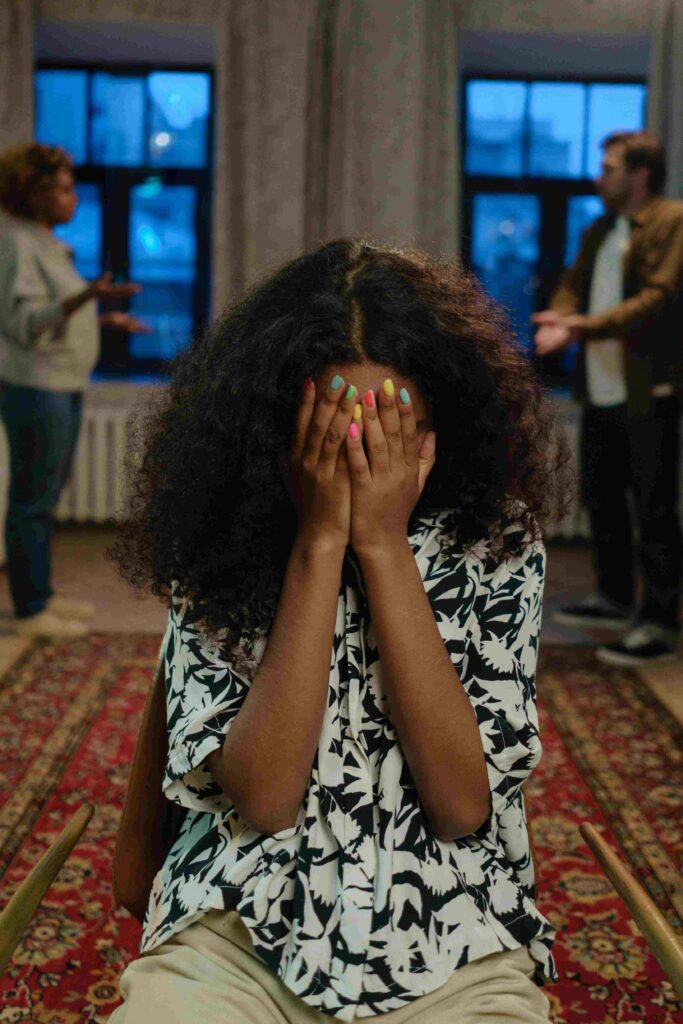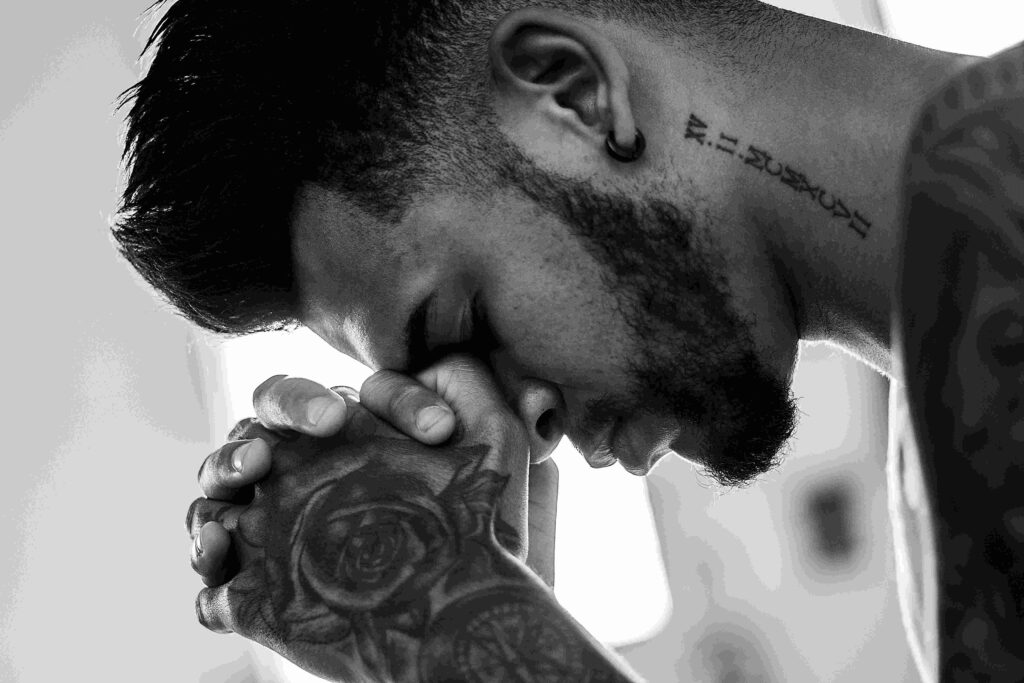Eating Disorders in the BIPOC Community: Breaking the Myths

Posted In
November 5, 2024
Posted On
Hey there!
ED RECOVERED. PITTIE mom. NATURE lover, salsa dancer.
I'm Cheryl
I’m an Eating Disorder Recovery Coach with a BA in Psychology and Nursing, along with a Foundation Certificate in Counseling.
Read my story.
When most people in the U.S. think of eating disorders, they often picture young, affluent, white women struggling with anorexia or bulimia. For a long time, I, too, believed this stereotype. My own disordered eating started when I was 13. While I wasn’t wealthy, I was young and white, and I struggled silently with my disorder, as many do. However, eating disorders in BIPOC (Black, Indigenous, and People of Color) communities are also prevalent, though often overlooked due to this very stereotype.
Recently, I spoke with a woman who revealed that she’d been struggling with binge eating. She told me that she’d never shared her struggle with her husband because “men don’t get eating disorders, and he wouldn’t understand.” Her words struck a chord—many of us have absorbed certain beliefs about who gets eating disorders and who doesn’t. We may assume that eating disorders don’t affect men, people in poverty, or communities of color. But the truth is far more complex. Eating disorders affect people of all genders, socioeconomic statuses, and racial and ethnic backgrounds. Trauma, social pressures, and underlying psychological factors play significant roles in their development, and these factors are not exclusive to any one demographic.

Myth #1: Eating Disorders Are Only About Beauty Standards
The media often portrays eating disorders as purely about conforming to beauty ideals, but the reality is much more nuanced. While societal beauty standards can influence eating behavior, research shows that trauma, stress, and mental health issues like anxiety and depression are often at the core of eating disorders. Among communities of color, trauma and systemic pressures may actually contribute significantly to the development of disordered eating behaviors.
For example, research suggests that racial discrimination and acculturation stress—pressure to conform to dominant cultural norms—can increase the risk of disordered eating among people of color. In a study by the National Eating Disorders Association (NEDA), BIPOC individuals reported higher levels of trauma, depression, and anxiety associated with food than their white counterparts, largely due to the unique social and cultural pressures they face regularly. For many in marginalized groups, eating disorders become a coping mechanism to manage complex feelings rooted in trauma rather than a drive to achieve a certain body type.

Myth #2: Only Wealthy People Suffer from Eating Disorders
Another pervasive myth is that people in poverty don’t experience eating disorders. Often, this is due to the assumption that those with limited food access wouldn’t have the luxury of restricting or bingeing on food. However, scarcity itself can actually exacerbate eating disorders. Research shows that financial stress, food insecurity, and the psychological toll of poverty are risk factors for disordered eating behaviors. Individuals who grow up without reliable access to food may develop binge-eating habits as a response to deprivation.
BIPOC communities in the U.S. experience higher rates of food insecurity compared to white communities. According to Feeding America, 24% of Black households and 19% of Hispanic households experienced food insecurity in 2021, compared to 10% of white households. Food insecurity often results in irregular eating patterns that can evolve into more serious issues, including binge eating and emotional eating, as individuals attempt to cope with the stress of not knowing when their next meal will come. This experience of scarcity, paired with the psychological stressors of systemic inequality, creates fertile ground for disordered eating to develop.

Myth #3: Men Don’t Get Eating Disorders
The assumption that men are immune to eating disorders because they “aren’t as concerned about their appearance” is a damaging misconception. According to a study published in the American Journal of Men’s Health, eating disorders among men are underreported, underdiagnosed, and often go untreated because men are less likely to seek help or be taken seriously when they do. Although men are less likely to exhibit traditional signs of disorders like anorexia, they may struggle with muscle dysmorphia (an obsession with achieving a muscular physique) or engage in restrictive eating, binge eating, and over-exercising.
For men of color, this silence is often compounded by cultural factors and a lack of accessible healthcare. In many communities, eating disorders are stigmatized as “women’s issues,” making it harder for men to acknowledge their struggles or seek support. Men of color also face unique pressures to maintain strength and resilience, sometimes resulting in a culture that discourages discussing body image issues. This leaves countless men, especially men of color, suffering in silence, making it harder for them to get the help they need.

Myth #4: Cultural Values Protect BIPOC Individuals from Eating Disorders
A common assumption is that because certain cultures value curvier bodies or different physical attributes, they are immune to eating disorders. However, BIPOC communities are just as vulnerable to disordered eating. Studies have found that BIPOC women may experience body dissatisfaction due to conflicting ideals—on one hand, they may feel pressured to fit Western beauty standards, and on the other, they may feel judged by their own communities if they conform too closely to those ideals.
For example, Latina women often face the dual pressure of adhering to the traditionally celebrated “curvaceous” body type within their culture, while also navigating the thin-centric ideals prevalent in the U.S. This can create a complex and often harmful relationship with food and body image. Similarly, Asian American women may internalize Western thin ideals while also confronting familial pressures to “not stand out” or adhere to traditional cultural expectations. The result? Many BIPOC individuals feel isolated in their struggles, with disordered eating behaviors becoming a way to cope with these internal and external conflicts.

How Can We Support BIPOC Communities in Recovery?
Addressing eating disorders within BIPOC communities requires a multifaceted approach that includes improving cultural competence within the healthcare system, increasing community outreach, and fostering safe spaces for open discussions. Here are some steps we can take:
- Provide Culturally Competent Care: Healthcare providers need training in cultural competence to recognize the unique experiences and needs of BIPOC individuals. According to the Academy for Eating Disorders, only 20% of mental health professionals in the U.S. receive training in cultural competence. This means many healthcare providers may not be equipped to offer supportive, sensitive care to clients from diverse backgrounds.
- Challenge the Stigma: Encouraging open discussions about mental health and body image within BIPOC communities can help reduce the stigma around eating disorders. Many BIPOC individuals suffer in silence due to the misconception that eating disorders are a “white woman’s issue.” By normalizing these conversations and sharing diverse stories, we can create a more inclusive environment for recovery.
- Improve Accessibility: Many BIPOC individuals lack access to affordable healthcare and treatment options for eating disorders. Community organizations, policymakers, and mental health advocates must work to expand access to affordable treatment, especially for low-income and underserved populations.
- Educate and Empower: Providing resources tailored to different cultural backgrounds can empower individuals to understand and recognize the signs of disordered eating. Campaigns, workshops, and support groups that reflect the cultural values and needs of BIPOC communities can help individuals seek help in a safe and understanding environment.
Final Thoughts
Eating disorders are complex, multifaceted issues that do not discriminate based on race, gender, or socioeconomic status. It’s crucial for us to challenge our assumptions and recognize that eating disorders can affect anyone. By raising awareness and dismantling these myths, we can create a more inclusive and supportive environment for people of all backgrounds who are struggling.
Taking the First Step Toward Healing
If you or someone you care about is struggling with an eating disorder, know that you’re not alone. There’s support available, and you deserve to receive it without fear of judgment. Recovery is a journey that can be tailored to meet your unique needs, and it’s never too late to begin.
At Eating Disorder Freedom, I offer a sliding scale for individuals in marginalized communities because I believe that everyone should have access to compassionate and effective care. Don’t let myths or financial barriers hold you back—start by scheduling a free discovery call here and take that first step toward a peaceful relationship with food and a healthier, happier life.
For additional support and community, consider joining a pro BIPOC support group below:
National Alliance For Eating Disorders – BIPOC Pro-Recovery Support Group
ANAD – BIPOC Eating Disorder Support Group
Sources
- National Eating Disorders Association. Black, Indigenous, and People of Color (BIPOC) and Eating Disorders
- American Psychological Association. Food Insecurity and Disordered Eating.https://www.sciencedirect.com/science/article/abs/pii/S1499404621007624
- Feeding America. (2021) Hunger in America.https://www.feedingamerica.org/hunger-in-america/black-communities
- Sociocultural influences on body image concerns in men of color. Li Z, Talleyrand RM, Sansbury AB. Ethnicity & Health. 2024 Aug https://www.tandfonline.com/loi/ceth20
Related
Pin
Share
next Story
Previous Story
Cheryl Pomario is a certified eating coach with a background in psychology and nursing, offering personalized coaching to help individuals overcome disordered eating.
Cheryl Pomario is a certified eating coach with a background in psychology and nursing, offering personalized coaching to help individuals overcome disordered eating.
Cheryl Pomario is a certified eating coach with a background in psychology and nursing, offering personalized coaching to help individuals overcome disordered eating.